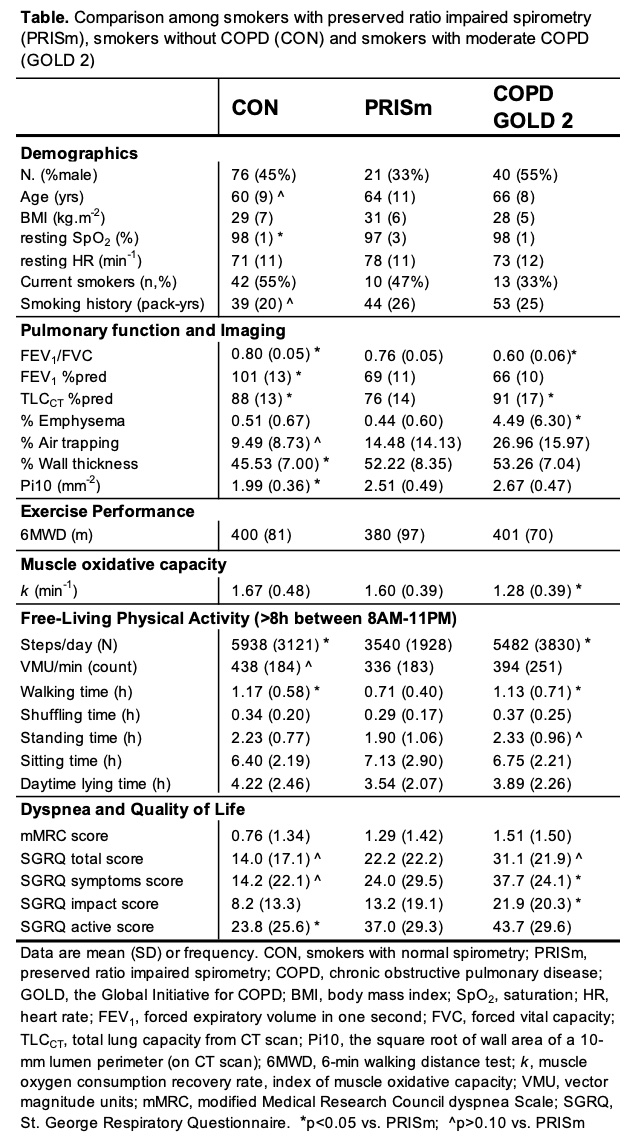Abstract
Introduction Smokers with preserved ratio impaired spirometry (PRISm) have low 6MWD and worse symptoms compared with normal spirometry smokers (Wan, E.S. et al. Respir Res 2014;15:89)
Aim To explore whether impaired muscle oxidative capacity or physical activity associates with PRISm, compared to smokers with normal spirometry (CON) or GOLD 2 COPD.
Methods Calf muscle oxidative capacity was assessed from the O2 consumption recovery rate constant (k) using near-infrared spectroscopy. Chest CT, mMRC, SGRQ, 6MWD and physical activity by triaxial accelerometry were measured. One-way ANOVA assessed differences among groups with a post hoc one-tailed t-test, assuming impairments in PRISm (reference group).
Results 21 PRISm, 40 GOLD 2 and 76 CON from the Muscle Health Study were included (Table). 6MWD did not differ among groups, but symptoms (p<0.077) and QoL (p<0.070) tended to be worse in PRISm than CON. k in PRISm was not different from CON (p=0.388) and greater than GOLD 2 (p=0.028). PRISm were less physically active than CON and GOLD 2 (steps/day, walking time p<0.030).
Conclusions Contrary to our hypothesis, muscle oxidative capacity was not impaired in PRISm. However, free-living physical activities were lower in PRISm than both CON and GOLD 2 COPD. This finding is counter to the notion that low activity causes impaired muscle oxidative function in smokers with abnormal lung function.
Funding R01HL151452
